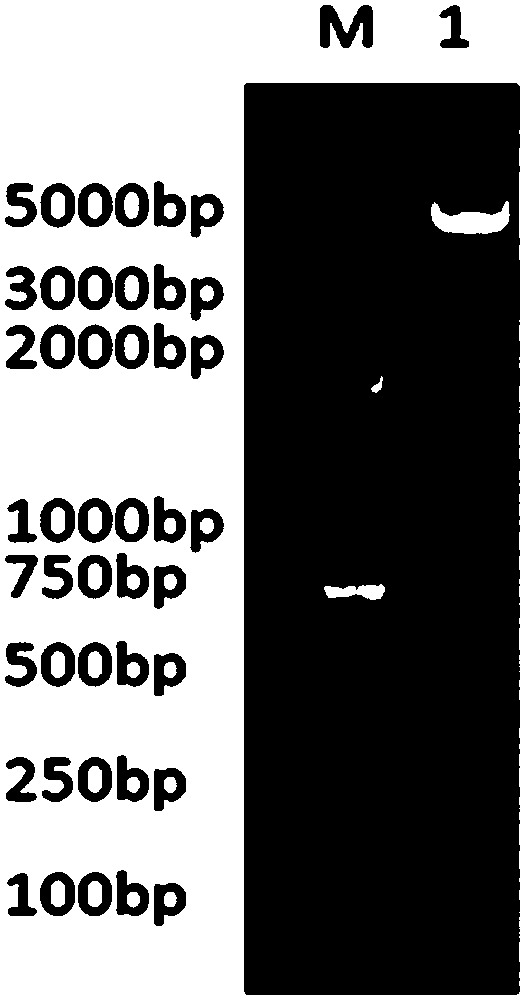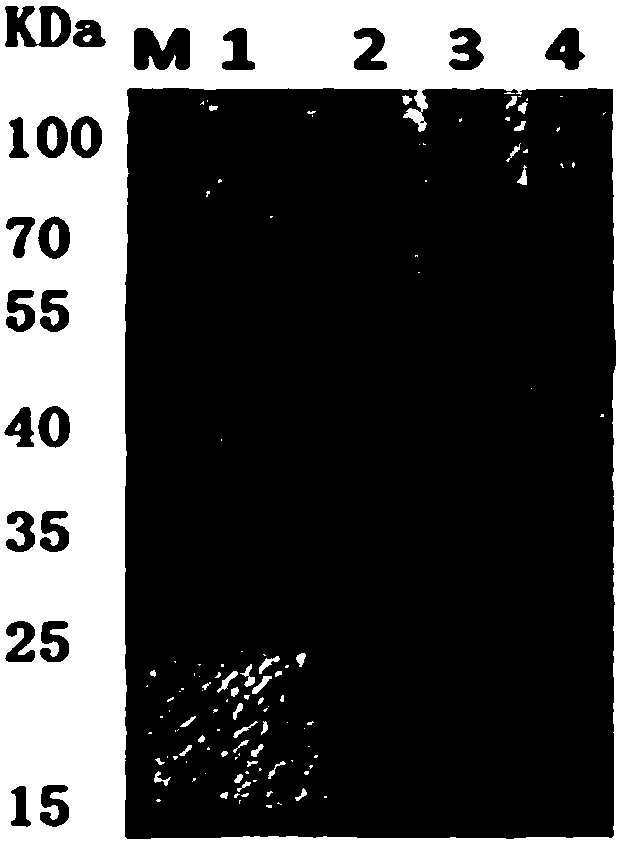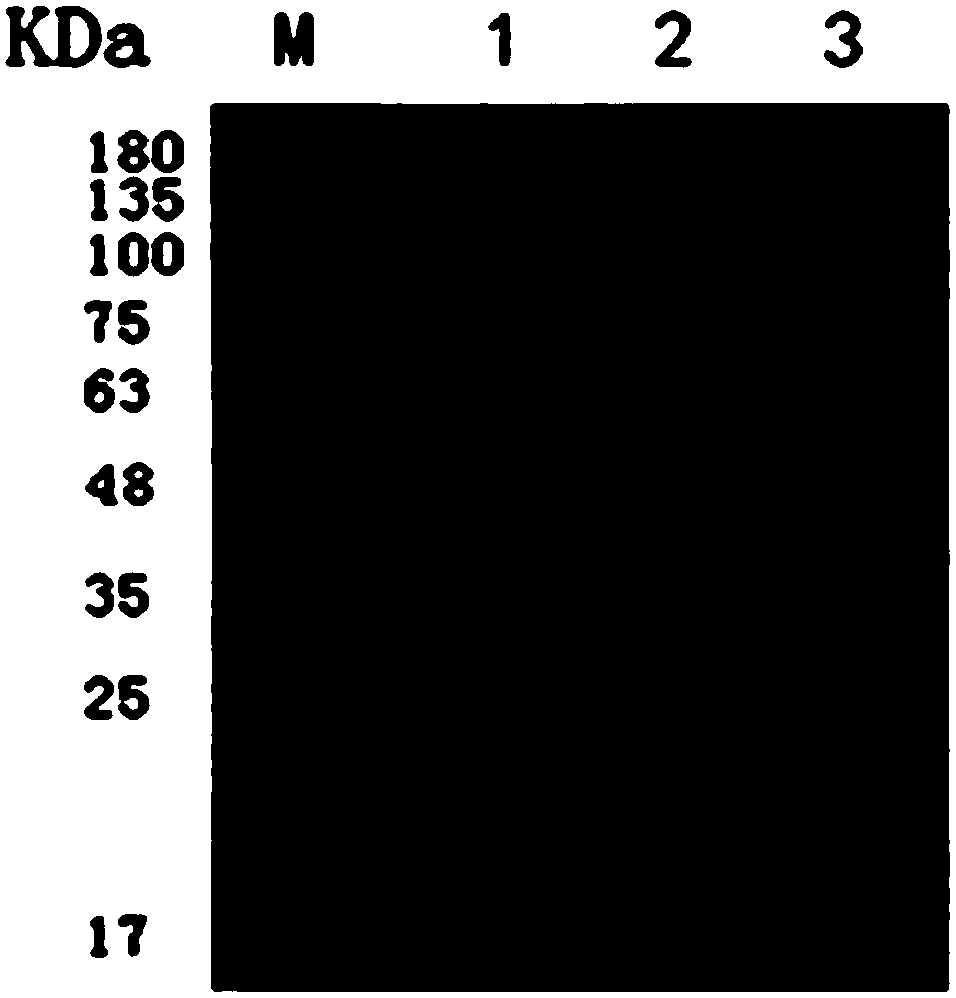Nanometer antibody resistant to pseudomonas aeruginosa ectotoxin A and application of nanometer antibody
A nanobody and toxin technology, applied in the field of immunology, can solve the problems of the lack of CH1 in the heavy chain, the inability to express the CH1 domain of the heavy chain, and the lack of binding ability of the light chain, etc., and achieve the effect of highly specific binding activity
- Summary
- Abstract
- Description
- Claims
- Application Information
AI Technical Summary
Problems solved by technology
Method used
Image
Examples
Embodiment 1
[0045] Example 1. Prokaryotic expression and purification of recombinant PE immunotoxin
[0046] 1.1 Prokaryotic expression of recombinant PE immunotoxin
[0047] The PE toxin partial sequence (AE004091.2) plasmid PE-PUC57 (synthesized by Jinweizhi Co., Ltd.) synthesized by the whole gene and the vector pET28a were cut with NcoI and NotI (purchased from NEB Company) double endonucleases at the same time, and the 1.4kb target was recovered. Gene fragments, with T 4 DNA ligase ligation, named PE-Pet28a, transformed into BL21 host bacteria, screened for kanamycin resistance, selected positive colonies, amplified and extracted plasmids, identified by NcoI and NotI double enzymes ( figure 1 : M is Trans 2K plus DNAmarker; 1 is the product of PE-Pet28a digested by NcoI and NotI). Inoculate the correctly identified strain into 200ml Kan after overnight amplification at a ratio of 1:50 + In LB medium, expand to OD at 37°C 600 When ≈0.6, add IPTG to a final concentration of 1mmol / L...
Embodiment 2
[0052] Example 2. Construction and screening of anti-PE nanobody phage display library
[0053] 2.1 Immunization of alpacas
[0054] Select a healthy adult alpaca, mix the recombinant protein PE with Freund's adjuvant at a ratio of 1:1, and immunize the alpaca with 6-7μg / Kg subcutaneous injection at multiple points on the back, and immunize the alpaca four times in total. The immunization interval was 2 weeks. Afterwards, the peripheral blood of the alpaca was collected for the construction of a phage display library.
[0055] 2.2 Isolation of camel-derived lymphocytes
[0056] Lymphocytes were analyzed from the collected camel-derived anticoagulated whole blood according to routine procedures in this technical field, every 2.5×10 7 Add 1mL RNA isolation reagent to each living cell, take 1mL for RNA extraction, and store the rest at -80°C.
[0057] 2.3 Total RNA extraction
[0058] Total RNA was extracted according to routine procedures in the technical field, and the con...
Embodiment 3
[0089] Example 3. Preparation of Anti-PE Nanobodies
[0090] 3.1 Amplification of original nanobody strain TG1 and transformation of nanobody recombinant plasmid into Escherichia coli BL 21 (DE 3 )
[0091] Inoculate the original strain TG1 glycerolbacterium containing Nanobody nucleic acid in 5 mL of fresh LB-A medium at a ratio of 1:1000, and culture overnight at 37°C and 200 rpm. The next day, plasmids were extracted using the Plasmid mini kit (OMEGA) according to the instructions. After verification, transform 1 μl of the above plasmid into 100 μl competent cells, mix gently, place on ice for 30 minutes, heat shock in a 42°C water bath for 90 seconds, and cool in an ice bath for 3 minutes. Add 600 μl LB medium to the centrifuge tube, shake and incubate at 37°C for 60 minutes. Take 100 μl of the supernatant, spread it on the LB-A plate with a triangular spreader, and culture it upside down at 37°C overnight.
[0092] 3.2 Induced expression and extraction of nanobodies ...
PUM
 Login to View More
Login to View More Abstract
Description
Claims
Application Information
 Login to View More
Login to View More - R&D
- Intellectual Property
- Life Sciences
- Materials
- Tech Scout
- Unparalleled Data Quality
- Higher Quality Content
- 60% Fewer Hallucinations
Browse by: Latest US Patents, China's latest patents, Technical Efficacy Thesaurus, Application Domain, Technology Topic, Popular Technical Reports.
© 2025 PatSnap. All rights reserved.Legal|Privacy policy|Modern Slavery Act Transparency Statement|Sitemap|About US| Contact US: help@patsnap.com



